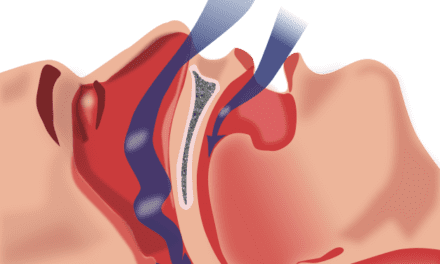Congenital hearing impairment is present in approximately 1 in 1,000 newborns, and yet there is no physiological cure for children who are born deaf. Most cases of congenital deafness are due to a mutation in a gene that is required for normal development of the sensory hair cells in the inner ear that are responsible for detecting sound. To cure deafness caused by such mutations, the expression of the gene must be corrected, a feat that has been elusive until recently.
Rosalind Franklin University of Medicine and Science (RFUMS) Assistant Professor Michelle Hastings and her team, along with investigators at Louisiana State University Health Sciences Center in New Orleans, and Isis Pharmaceuticals in Carlsbad, Calif, have now found a way to target gene expression in the ear and rescue hearing and balance in mice that have a mutation that causes deafness in humans. The results of the study are reported in the paper, Rescue of hearing and vestibular function in a mouse model of human deafness, which was published February 4, 2013 in the journal Nature Medicine.
Dr. Hastings collaborated with research leaders across the country, and the collaboration led to the development of a novel therapeutic approach to treat deafness and balance impairment by injecting mice with a single dose of a small, synthetic RNA-like molecule, called an antisense oligonucleotide (ASO).
The ASO was designed to specifically recognize and fix a mutation in a gene called USH1C that causes Usher syndrome in humans. The ASO blocks the effect of the mutation, allowing the gene product to function properly, thereby preventing deafness.
Usher syndrome is the leading genetic cause of combined deafness and blindness in humans. Treatment of these Usher mice with the ASO early in life rescues hearing and cures all balance problems. “The effectiveness of the ASO is striking,” states Hastings. “A single dose of the drug to newborn mice corrects balance problems and allows these otherwise deaf mice to hear at levels similar to non-Usher mice for a large portion of their life,” she says.
Validating ASO efficacy in the Usher mice is an important step in the process of developing the strategy for human therapy. Dr. Jennifer Lentz, Health Sciences Center, who has been studying Usher syndrome for almost 10 years and engineered the mice to model the human disease, states, “Successfully treating a human genetic disease in this animal model brings the possibility of treating patients much closer.”
The results of the study demonstrate the therapeutic potential of this type of ASO in the treatment of deafness and provide evidence that congenital deafness can be effectively overcome by treatment early in development to correct gene expression.
SOURCE: Rosalind Franklin University of Medicine and Science



